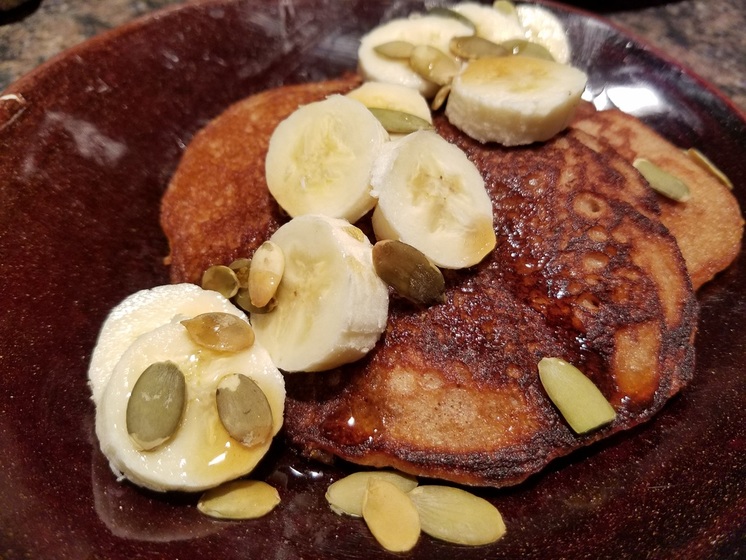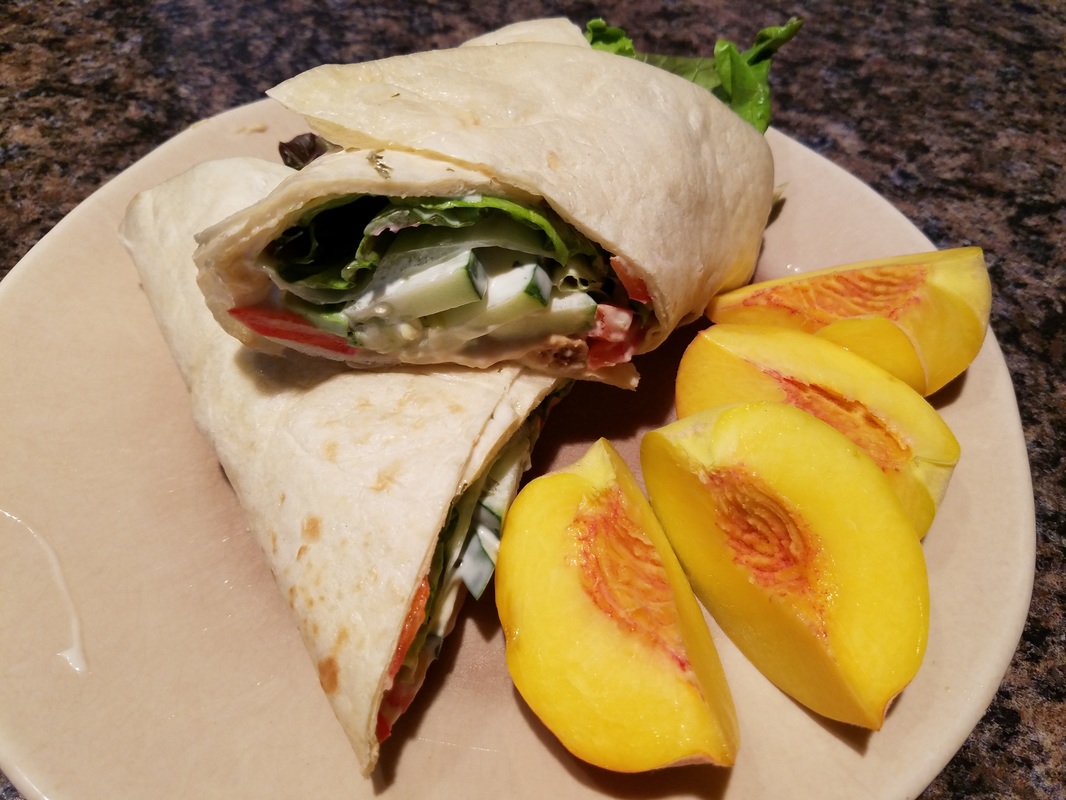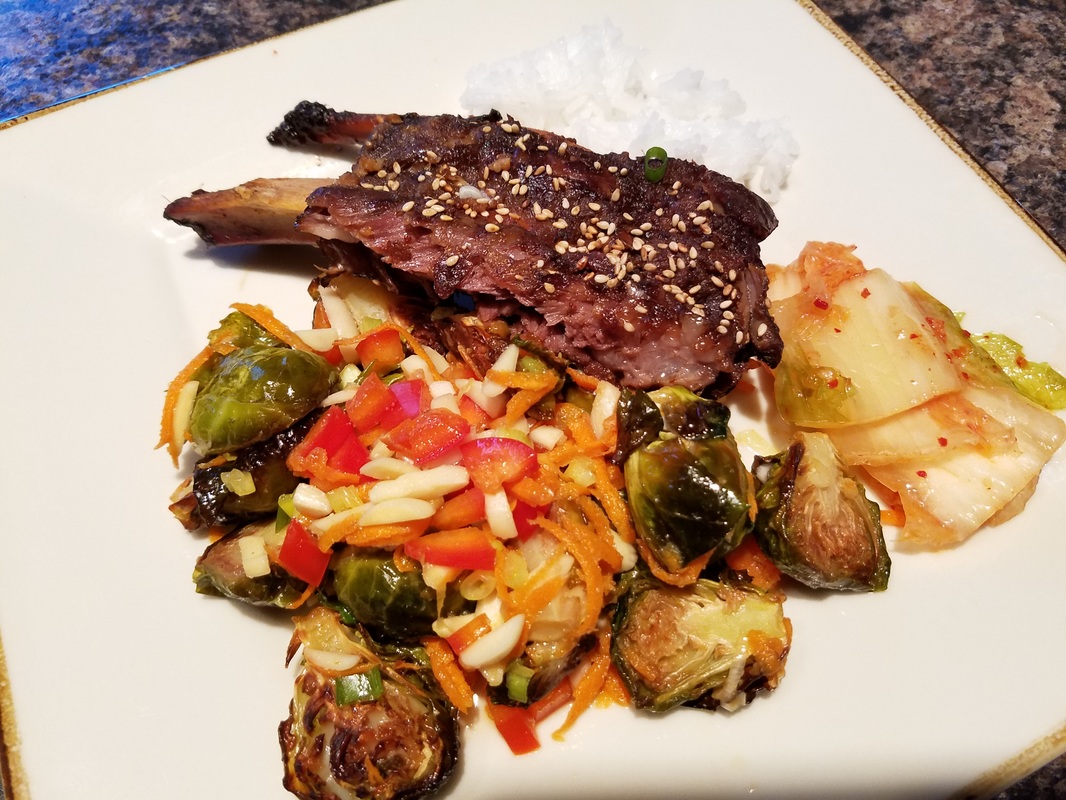Educate. Thrive.Your resource for health and wellness information
|
|
It seems to me that there is so much emphasis put on the progression of labor, that we fail to address the many other aspects to the process. The Amniotic sac and the fluid it contains is as crucial to the initiation of labor as it is a home for the growing infant. Nutrients & a Healthy Amniotic EnvironmentVitamin C and Vitamin E are depleted during labor. Isn't that interesting! During labor the body is being damaged and free radicals are being produced. Water soluble Vitamin C and fat soluble vitamin E work together to collect and neutralize these oxidized particles. Vitamin C is a big part of the amniotic fluid, and sac. It is important for the sac to remain intact as long as possible. This lowers the risk of infection to both mother and baby. Inflammation is the trigger for labor. Naturally as the amniotic sac grows with the growing baby, there are small stressors and stretching that must go on. In the process, there is oxidative damage. The high levels of Vitamin C help to prevent premature labor by inhibiting excessive inflammation. As the natural levels of cytokines increases in the amniotic fluid, the amount of vitamin c is depleted. Vitamin C deficiency is associated with premature rupture of membranes (or the water breaking before the onset of labor). There is a direct correlation with Vitamin C levels and Vitamin E levels. As the amount of vitamin c goes down, so does vitamin e. Both can be increased by increasing dietary vitamin c. Vitamin c is used to recycle used vitamin e. If there is not enough vitamin c for the job, then no new vitamin e is produced. The main constituent of the amniotic sac is collagen. So, naturally, as labor progresses, the same reactions happen in the breakdown of the collagen of the sac to allow the baby to be born. Vitamin C is found in a large number of raw fruits and vegetables (it is destroyed by heat). Fruits (papaya, kiwi, oranges, pineapple, strawberries, cantaloupe), Bell Peppers, Green Veggies (Broccoli, Brussels) Vitamin E is fat soluble and must be consumed with a fat to be absorbed properly. It is found in Grass-Fed Animal Products (butter, Eggs), Nuts and Seeds (sunflower, almonds, avocado, peanuts), Green Veggies (swiss chard, beet greens, mustard greens, asparagus). Hydration and electrolytes are also very important for amniotic fluid levels. I have seen, personally with my clients, improvements to marginal amniotic fluid levels by changing HOW a client hydrates. Water is super important in pregnancy, and especially so for the amniotic fluid. The majority of amniotic fluid is water and electrolytes (there are plenty of other things as well, such as hormones, vitamins, proteins, fats). If you are pregnant and are drinking LOTS of water, but still feeling thirsty, you are most likely lacking in electrolytes. This can lead to low amniotic fluid levels in the later part of gestation and increase your risk of induction. Electrolytes are minerals (and other chemicals) that increase the absorption of water into cells. Without them, the water is a weak hydrator. Most electrolyte drinks are based on sodium and potassium, but are missing ESSENTIAL Magnesium. Magnesium is the transport molecule and moves sodium and potassium into and out of the cells. Without Magnesium, these other minerals are not pulled into the cells. Simple ways to increase hydration, without drinking gallons of water, include: 1. eating juicy fruits like watermelon and cucumbers 2. hydration waters like coconut water 3. sprinkle a little celtic salt or other trace mineral salt into your water 4. add fruits to your water 5. eat brothy soups Preventing TearingLet's talk a little more about Vitamin C and Vitamin E. Did you know that Vitamin E deficiency is becoming prevalent in the US? Many of the common chemicals used in our daily lives (Fluoride, Chlorine), as well as high amounts of polyunsaturated fats in the diet, deplete the body of Vitamin E. Vitamin E keeps polyunsaturated oils stable and from going rancid before being used (why they add it to vegetable cooking oils). Vitamin E is a potent antioxidant. Vitamin E is used as a moisturizer and softener for the skin tissues. It can also speed healing of any tears that may occur. Vitamin C and Copper work together to produce Elastin. Elastin is a protein in tissue that allows it to stretch without tearing and return to its natural shape. During labor high amounts of elastin are produced to allow the cervix and vaginal tissues to stretch without damage. If you are deficient in Vitamin C, then copper levels can rise resulting in a loss of elastin production and a number of other complications in labor. The Delicate Balance of Copper & ZincThe roles of many of these nutrients is still being researched and discovered. An interesting correlation is that of copper and zinc in the processes of labor. Naturally, zinc is an essential mineral for reproductive functions beginning before conception. As the onset of labor beginnings, maternal and amniotic zinc levels rise. Zinc is a catalyst of the majority of enzyme processes in the body. As we discusses prior, many of the reactions of labor require enzymes to make them work. Without the zinc to be the catalyst, there is not reaction. Zinc and Copper are naturally antagonists. Meaning they fight each other. When copper is high, zinc is low, when zinc is high coppers low. During labor there should be a balance. They are both increased as the natural processes of labor begin. As estrogen rises, so does copper levels…and as copper levels rise, so does estrogen. Too much copper in the system is associated with preterm labor and premature rupture of membranes. Consuming enough zinc in the diet helps to keep the amount of copper in check. Zinc is found in high amounts in Red Meats, Seeds (sesame and pumpkin), nuts (garbanzos, cashews), and quinoa. Preparing for Blood Loss - More than Just IronIt is natural, that in labor, there will some level of blood loss. Proper nutrition can prepare your blood volume to compensate for the loss without draining the mother too much. It can also help prevent unnecessary bleeding and hemorrhaging. Iron is especially important in pregnancy (which is why they do blood work for anemia mid pregnancy). If you do not have enough iron in your blood, you and your baby and not properly oxygenated. But there is more to blood health than just iron. Hydration, again, is key. Amniotic fluid is made from maternal plasma, the liquid portion of blood. Mineral electrolytes also play a role in the production and function of red blood cell. Zinc is now known to be a cause of anemia. It has several roles in red blood cells including the formation of red blood cells. Zinc is a catalyst for many enzyme reactions, which includes the binding of oxygen and carbon dioxide to red blood cells to be transported. Without enough zinc, there is no chemical reaction to bind and release oxygen and carbon dioxide to the hemoglobin. Magnesium (again, see how important this is), is a transport molecule for red blood cells as well. Carrying other minerals, water, and nutrients into the cells. Magnesium deficiency can cause a decrease in Iron. It is also needed for maintaining cell flexibility. Magnesium deficient red blood cells become more firm and cannot flex to fit through tiny capillaries. Iron, is of course, the star of the blood world. Iron makes up the portion of red blood cells that carries oxygen, the hemoglobin. B Vitamins are water soluble, meaning they need water to be absorbed and for function. B vitamins are found in high amounts in the blood (specifically B6, B12, and B9-Folate). These B vitamins are used in the production of red blood cells (which needs to almost double in volume during pregnancy). A deficiency in any of these B vitamins can cause anemia. In order to make enough blood for you, your baby and to compensate for loss, much nutrition is needed. Hormones help a little as well. As estrogen levels rise, they stimulate the enzymes needed for increase red blood cell production. Preventing Postpartum HemorrhagingThis is becoming a much more common scenario. So much so that the new standard of care is to administer IV pitocin in the hospital for delivery of placenta to prevent excessive bleeding. But the real question is WHY is this happening? There is no real answer yet, but I have my theories. We all have heard that newborn baby's receive the vitamin K shot. Vitamin K is a blood regulating vitamin. It's claim to fame is the blood clotting processes (which needs Calcium as well). It is actually a blood regulator....keeping blood equally fluid with the ability to clot. There has been a substantial increase in newborns being born deficient...this is a controversial subject as well with many people saying it is normal for babies to be low in vitamin k. Be belief, yes and no. There is a natural process to Vitamin K activation in babies, with Vitamin K functions peaking weeks after delivery (possibly why Vitamin K deficiency symptoms in babies can not appear for weeks). But, the vitamin K they do have comes from the mother, and if she is deficiency (which most people are) than the baby will be born deficient. Vitamin K deficiency is real, and becoming increasingly common. There are many other functions to Vitamin K, but for labor, its real function is in clotting the blood vessel as the placenta is delivered. For more on Vitamin K, please read my previous post...Digging Deeper into Fat Soluble Vitamins Another worrisome issue I am seeing more and more, is the use of high dose fish oil supplements throughout pregnancy. DHA is GREAT for developing baby's brain, and for preventing postpartum depression. EPA is the precursor to PGE3 (which is an agonist for PGE2, or drives production). Too much fish oil is known to thin the blood, one of the reasons it can cause heavier menstrual bleeding. As I just mentioned, EPA can be a producer of the prostaglandins needed for labor progression. It can also work to regulate inflammation, and keep it in check. DHA can keep mother more calm, and less stressed. But too much and you can open your self up to blood that is too thin causing profuse bleeding. Normal dietary amounts are not an issue, and are needed for the natural labor processes, but many woman are taking additional supplements in very high amounts, upwards of 2000-5000mg per day. At this level we see blood changes. My advice, eat Omega rich foods and stop the fish oil supplements until after baby arrives, starting at around 36 weeks. Meal Plan #5BREAKFAST #5: Sprouted Grain Coconut Banana Pancakes I am not anti grains, if you can handle them. But, they do need to be used correctly. Sprouting grains increases the amount of nutrition available, as well as destroys phytic acid which binds to minerals and can cause digestive inflammation. To add some healthy fats and beneficial nutrients to this meal, I used mashed bananas and coconut oil in the batter. Cooked them in grass-fed butter, and topped them with more bananas and pumpkin seeds. WANT THE RECIPE? Find is soon on my recipe blog LUNCH #5: Hummus and Veggie Wrap; Peach As I mentioned, not all protein sources need to be meat. Hummus is just mashed garbanzo beans with tahini (sesame seed butter), seasoning and olive oil. All good things for preparing for labor. In this wrap I added a bunch of raw veggies (cucumber, bell pepper, lettuce, avocado) and some leftover tzatziki from the other night's dinner. So, in this meal there was plenty of protein, fat, vitamin c, and probiotics) DINNER #5: Crockpot Korean Beef Ribs; Kim Chi; Orange Chili Brussels Sprouts I absolutely love slow cookers! They make amazing meals while I am at work. I found some delicious looking beef ribs and knew I needed to make Korean ribs. In my version, I go pretty traditionally, with clean ingredients. I don't add brown sugar, instead I use apple sauce (pear is better, but alas, I am allergic), and raw-unfiltered honey. These really do melt in your mouth. More probiotics, with the kimchi RECIPE HERE I mentioned that brussels are highly nutritious for the cabbage family, I've added a thai twist to these with an orange juice and thai chili sauce with almonds (yeah fats and vitamin e) WANT THE RECIPES? Find them soon on my recipe page Miss a Part in the Series?
Planning Nutritionally for Labor and Delivery Part 1 - Biology of Labor Planning Nutritionally for Labor and Delivery Part 2 - Oxytocin "the Love Hormone" Planning Nutritionally for Labor and Delivery Part 3 - Estrogen and Progesterone Planning Nutritionally for Labor and Delivery Part 4 - Cervical Ripening To Contintue... Planning Nutritionally for Labor and Delivery Part 6 - Probiotic Health Planning Nutritionally for Labor and Delivery Part 7 - Top 10 Foods for Labor and Delivery
9 Comments
Kristin
1/24/2019 03:17:37 pm
Hello! I am due in a week with my first and planning a home birth with midwives. My friend sent me your blog recently and I only wish I had come across it sooner! What an amazing wealth of information. I'd love to know your thoughts on the Vitamin K shot for newborns? I ordered the Vitamin K drops, since the injection sounded like a lot for a little baby, but even the midwives say that there's really no downside to the injection, that it's been proven to be safe. Thanks for your insight!
Reply
Britney
7/23/2024 07:37:47 pm
NATURAL HERBS IS THE REAL DEAL IN CURING HERPES-1&2, HIV/AIDS, HPV AND CANCER...Contact Dr Osato to get the natural herbs to cure yourself from that horrible disease/virus. I got the herbs from Dr Osato and I made use of it with the instructions he gave to me on how to use the natural herbal product, after usage I went for a checkup and my result was Negative and all the symptoms of herpes were completely gone from my body. I was cured from herpes-1&2 after using Dr Osato natural herbal medicine. You can contact Dr Osato on his email: [email protected] or WhatsApp +2347051705853 to get the herbal medicine from him and his website is https://osatoherbalcure.wordpress.com.
Reply
1/29/2019 11:57:17 am
Hello Kristin,
Reply
Tess
10/21/2019 03:19:50 am
Hi Kristin,
Reply
Sarah Thompson
10/23/2019 09:51:37 am
Hello Tess,
Reply
Tess
10/21/2019 03:42:44 am
Sorry I meant Sarah*!! 😅
Reply
mark hold
7/4/2024 05:41:28 pm
One faithful day as i was watching a video on you tube i saw a comment of one MR PAUL HAVERSACK testifying of this great herbal healer doctor Moses Buba, That helped him enlarge his manhood .i was shocked and happy, so i quickly visited his website and emailed him within 30 mins he got back to me and told me all i need to buy and i did so after 4 days i received his herbal medicine ,he gave me instructions on how to use it ,as i am speaking to you people now after using the cream for just two weeks my manhood size is 10 inches long and 8.0 girth ,,am so happy and grateful for his work in my life thank you so much Doctor Moses buba ,,i also learnt he has cure for LOW SPERM COUNT,PREMATURE EJACULATION,ERECTILE DYSFUNCTION,HIV/AIDS VIRUS,DIABETES 1/2,HERPES DISEASE, CANCER, and lots more
Reply
Cheryl
7/11/2024 07:45:10 pm
My name is Cheryl Floyd. I am the happiest woman on the face of this earth. I am happy because of this man, a great spell who made my dreams come true. This is the handwork of Doctor Odunga. I contacted this man to help me save my marriage. My husband and I have been living without a child for 17 years and this has made me sort help in spells. I contacted Doctor Odunga and only him out of three spell casters did his work for me within 48 hours as he promised and I became pregnant with twins. I have been wanting to write this testimony for so long now when I became pregnant but I waited for the babies to be delivered and I am now a mother of twins, a boy and a girl. What else are you waiting for? Do you want a spell for pregnancy and solve fertility problems? Contact Doctor ODUNGA now at Email: [email protected] OR Whats App/Call +2348167159012 and he will talk to you directly.
Reply
Britney
7/23/2024 07:38:15 pm
NATURAL HERBS IS THE REAL DEAL IN CURING HERPES-1&2, HIV/AIDS, HPV AND CANCER...Contact Dr Osato to get the natural herbs to cure yourself from that horrible disease/virus. I got the herbs from Dr Osato and I made use of it with the instructions he gave to me on how to use the natural herbal product, after usage I went for a checkup and my result was Negative and all the symptoms of herpes were completely gone from my body. I was cured from herpes-1&2 after using Dr Osato natural herbal medicine. You can contact Dr Osato on his email: [email protected] or WhatsApp +2347051705853 to get the herbal medicine from him and his website is https://osatoherbalcure.wordpress.com
Reply
Leave a Reply. |



 RSS Feed
RSS Feed